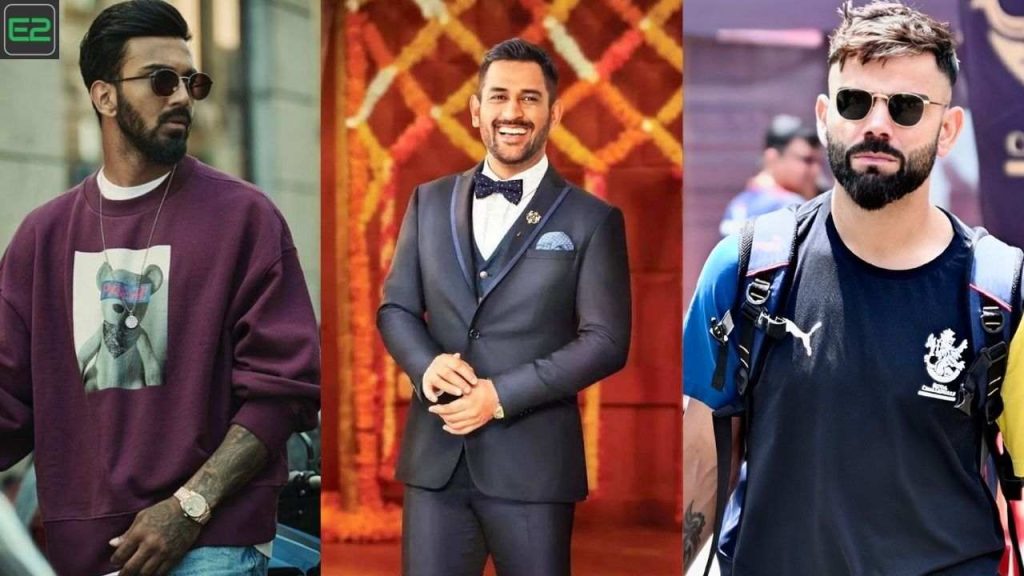Cricket is an exciting sport with many fielding positions. The days of simple field setups are gone. Now, teams create special strategies to keep the batsmen from scoring runs. Fielding is both a science and a sport. Players need to be quick and smart, whether they are standing close to the batsman or far away near the boundary.
In this article, we will explore all the basic cricket fielding positions and explain what each one does. This will help you understand the game better and enjoy watching it even more.
All Fielding Positions in Cricket
Basic Fielding Positions
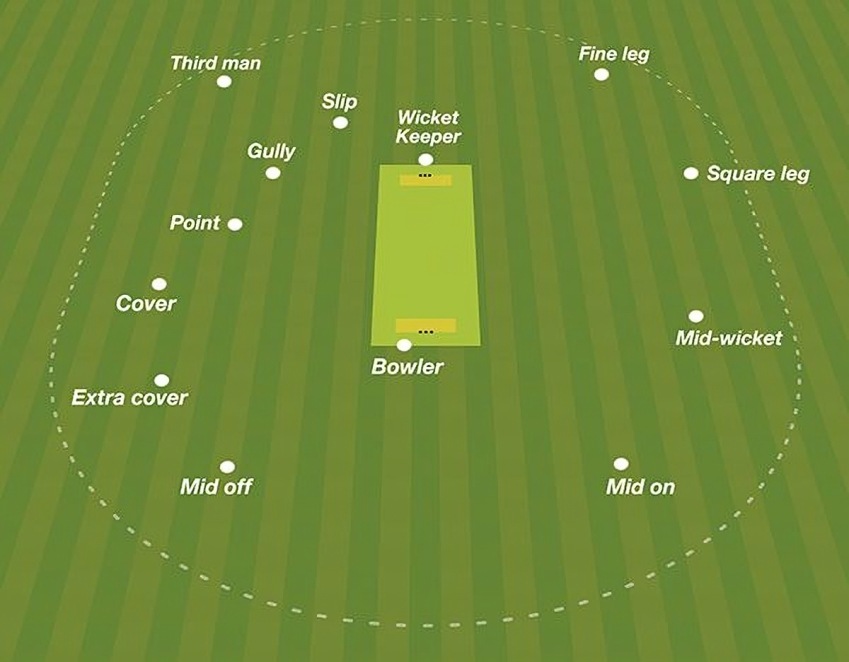
- Wicketkeeper: The wicketkeeper stands behind the stumps. They need to be fast with their hands to catch or stump the batsman. They also save the ball from going for boundaries.
- Third Man: Positioned behind the batsman, near the boundary on the off-side, the third man stops shots played to this area, especially cuts or edges.
- Slips: Slips stand close to the wicketkeeper to catch the ball when the batsman edges it. Multiple slips can stand in a diagonal line.
- Gully: Gully is near the slips but a bit wider. The gully fielder tries to catch the ball when it flies off the bat’s edge.
- Point: This fielder stands on the off-side, square to the batsman. The point fielder stops singles and looks for run-outs.
- Cover: The cover fielder stands a little further away than point, on the off-side. They stop hard shots played in this direction.
- Mid-Off: The mid-off fielder stands in line with the bowler on the off-side. They stop drives and prevent runs.
- Mid-On: Similar to mid-off but on the leg side of the batsman, mid-on stops shots played straight down the ground.
- Mid-Wicket: Positioned on the leg side, mid-wicket is there to stop pull or flick shots.
- Square Leg: This fielder stands on the leg side, in line with the batsman. They stop shots played on the leg side.
- Fine Leg: Positioned on the boundary on the leg side, the fine leg fielder stops shots that go down the leg side.
- Short Leg: Close to the batsman on the leg side, short leg looks for catches off mistimed shots.
Also Read: Top 5 Best IPL Captains Who Can Win the 2025 IPL Trophy
Advanced Fielding Positions
- Short Third Man
- Extra Cover
- Forward Short Leg
- Deep Backward Point
- Deep Point
- Deep Extra Cover (Sweeper)
- Deep Cover (Sweeper)
- Long-Off
- Long-On
- Deep Mid-Wicket
- Deep Forward Square-Leg
- Deep Square Leg
- Backward Square Leg
- Deep Backward Square Leg
- Leg Slip
- Short Fine Leg
How Are Cricket Fielding Positions Named?
Fielding positions in cricket are named based on their distance and angle from the batsman. Terms like “short,” “deep,” or “long” indicate how close or far the fielder is. Words like “square,” “fine,” and “backward” describe the angle at which the fielder stands in relation to the batsman.
For example:
- Silly: Very close to the batsman.
- Mid: Between the batsman and boundary.
- Deep or Long: Near the boundary, far from the batsman.
- Short: Close but not too close to the batsman.
Also Read: Who is India’s Most Successful T20 World Cup Captain?
Important Fielding Positions Explained
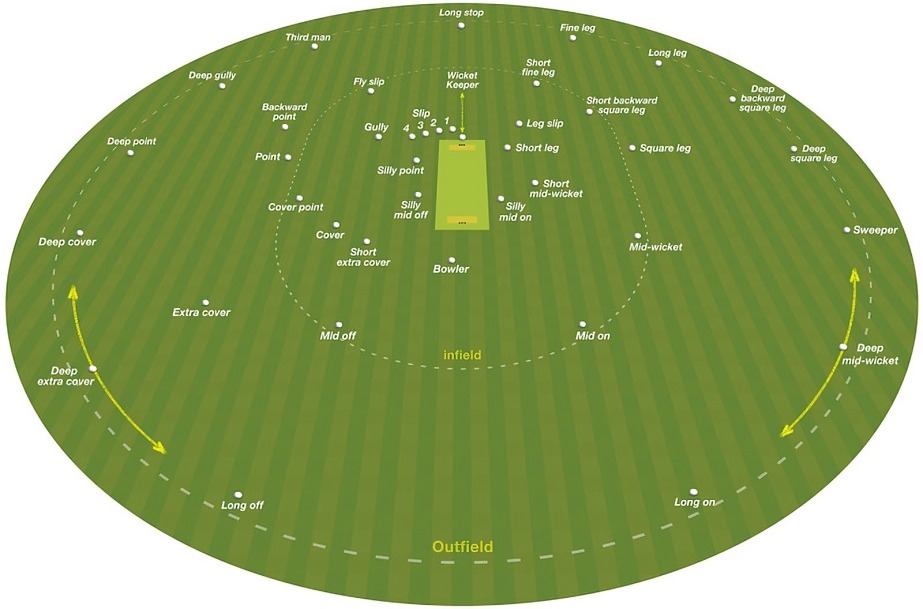
Cricket fields are divided into three main areas:
- Close Infield: This is the area 10-15 yards from the batsman, where fielders stand close to catch balls.
- Inner Ring: This is the area 30 yards from the batsman, where fielders can stop singles and save runs.
- Outfield: This is the area beyond the inner ring, stretching to the boundary ropes.
Wicket-Keeper
The wicketkeeper is a very important player. He stands behind the stumps and is always ready to catch the ball or stump a batsman if he steps out of his crease. The wicketkeeper needs to be quick and alert to make important plays.
Slips
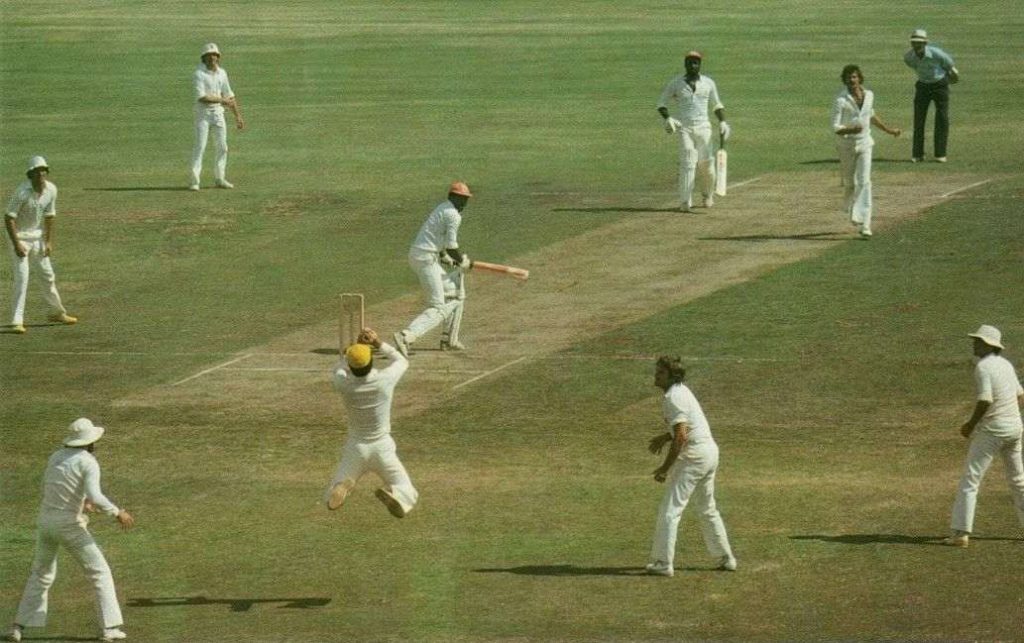
Slips are fielders who stand next to the wicketkeeper on the off-side. They catch balls that the batsman edges. Typically, there are about four slip fielders, and they stand in a diagonal line. The number can increase based on the bowler’s speed and the match situation.
Third Man
The third man stands near the boundary to catch any balls that the batsman tries to cut. This position is very important in limited-overs cricket, where every run counts.
Gully
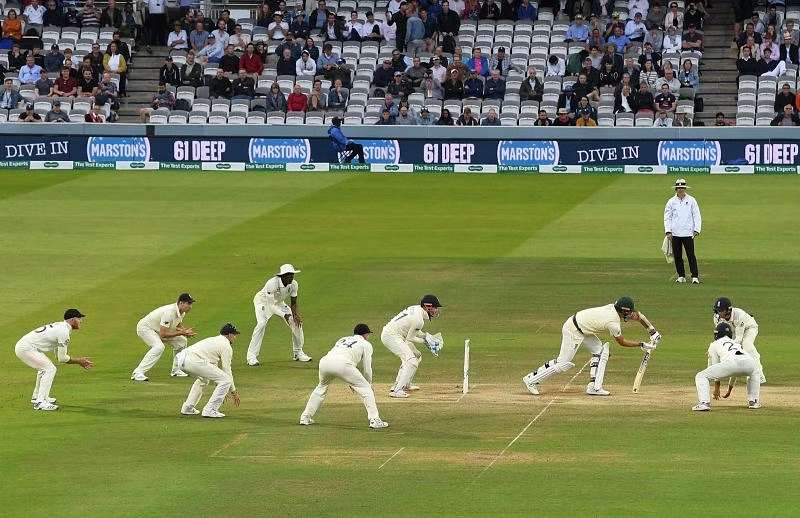
The gully fielder stands close to the slips. He is there to catch balls that the batsman edges, especially when he is new to batting. Gully fielders are often the fastest players on the team.
Point
The point fielder stands on the off-side, near the batsman. He tries to stop singles and catch balls that are hit square of the wicket. There is also a backward point, which stands a little behind the usual point position.
Cover
The cover fielder stands between point and mid-off, at an angle towards the boundary. He needs to cover a lot of ground to stop runs and catch powerful shots.
Mid-Off and Mid-On
Mid-off is located on the off-side, while mid-on is on the leg-side. Both positions are important for stopping singles and preventing easy runs.
Mid-Wicket
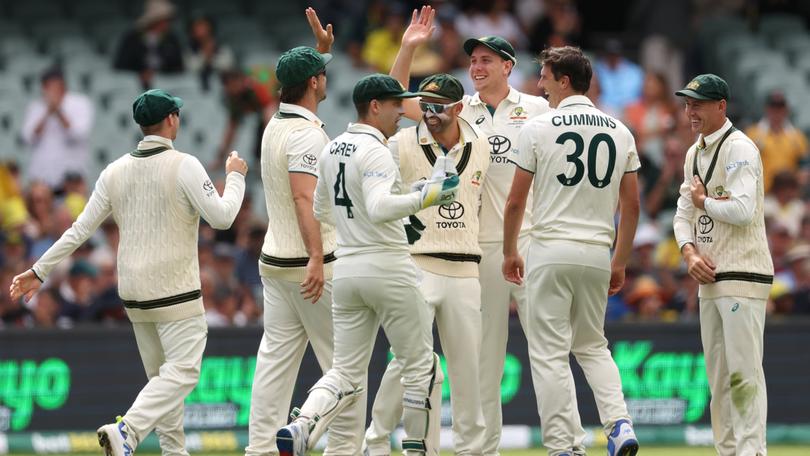
Mid-wicket is a key position on the leg side. The fielder here needs to be brave and ready to catch powerful shots that come towards him.
Square Leg
Square leg stands near the leg umpire. This fielder catches balls that are hit behind the batsman. He is vital for stopping runs from hooks and sweeps.
Fine Leg
Fine leg is positioned at the boundary on the leg side. He catches balls that the batsman flicks for boundaries.
Short Leg
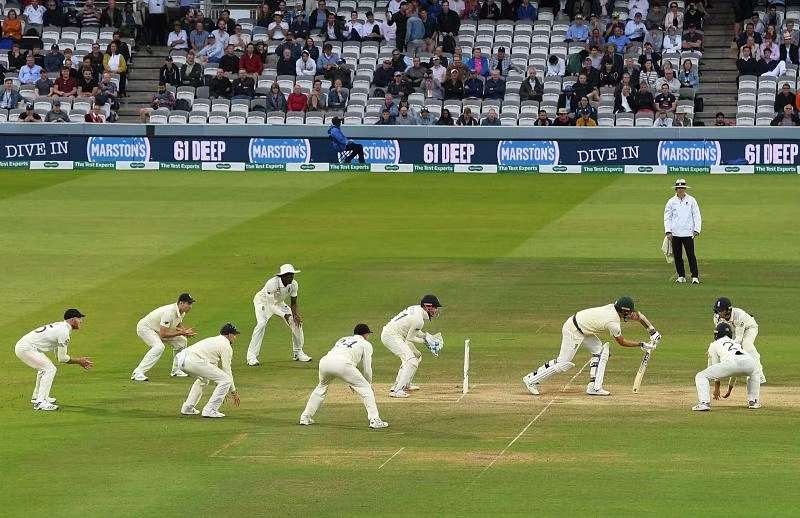
Short leg stands very close to the batsman on the leg side. This position is often used when a spinner is bowling. The fielder must be careful, as he can get hit by the ball.
Also Read: Top 5 Highest Wicket Takers in T20I World Cup 2024


